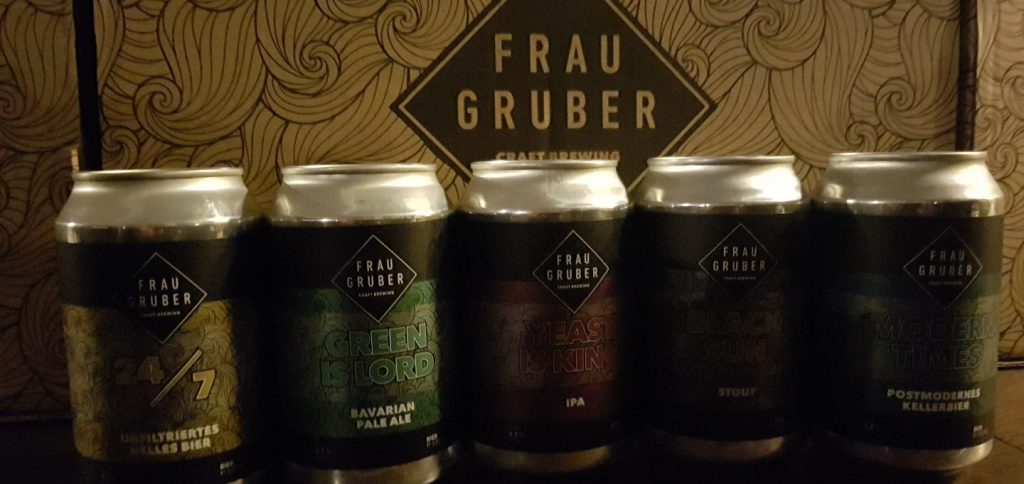Themed Week Resources: Yeast – A Wide Variety of Aromas for the Craft Beer Scene

The topic of “yeast” is widely discussed on the craft beer scene. For some time already, US craft brewers have been experimenting with the fungi that add the alcohol to the beer and give it its distinctive aroma. Even here in Germany, craft brewers are now becoming more keen to experiment with this raw ingredient than “regular” breweries.
Enzo Frauenschuh is one of the few here in Germany to have latched on to “mysterious” yeast as a fermenting agent and to have pioneered it to create innovative types of craft beer. For the sole purpose of exploring the variety of different aromas available. In this interview with drinktec, the master brewer tells us about his “Frau Gruber” label, made in Augsburg, what fascinates him so much about yeast, which aromas the different fungal structures create, and the challenges he faces in his work.
Mr Frauenschuh, what makes yeast such an interesting ingredient for you?
There has been very little research into yeast in the past and yet, despite its great potential, very few people are interested in it unfortunately. Eighty percent of breweries use the same organisms time and time again. There are hundreds of strains of yeast worldwide, each producing their own very specific aromas. Brewers really must consider which of these they would like to use as they decide where exactly they would like to take drinkers on their “yeast” journey for the mind and senses.
Could you elaborate? What factors need to be considered when you are using yeast?
Yeast is incredibly complex. If there’s something you don’t like, it doesn’t simply change to how you want it or think it should be. Add in some other nutrients, however, e.g. via different malts and/or other pulp programs, whereby the sugar composition changes, or if you change the fermentation temperature, the organisms suddenly produce completely different, very specific aromas.
So how does it work with, say, the banana aroma in wheat beers?
The byproduct of the fermentation process here is an ester named isoamyl acetate. To create this aroma, we brewers have to place the yeast under some stress, which we do, for example, through pressure fermentation or by subjecting it to temperatures it is not used to. The organisms can, however, still create even more aromas.
What other tastes can yeast give to beer?
Aromas of blackcurrant, raspberry or cherry aside, yeast can also add notes of peach or apricot, or create a “multi-vitamin” beer. The variety of possible aromas is enormous though.
Where do craft brewers actually get the different types of yeast from?
There are a number of companies in the USA nowadays, such as “White Labs” and “The Yeast Bay”, which supply very unusual types of yeast. I can receive my yeast supplies through the mail, delivered to me at the brewery in Gundelfingen. The service is not cheap of course.
How many yeasts do you work with at the moment?
We currently have six beers in our range and use seven yeasts to produce these. I have around 30 others in my collection, however, and will be trying these out in new recipes soon. The next beer you can expect from us, for example, will be an India Pale Ale with aromatic hops, and an intensified Australian yeast flavor with strong hints of lychee.
What future developments can we expect for yeast on the craft beer scene?
It’s still early days for yeast on the German craft beer scene. I’ve noticed that an increasing number of brewers are becoming interested in new yeast combinations, however, and are gradually beginning to experiment with these. I’m certain that there are some very specific wild yeasts lying around in old French wine cellars that no one really knows about. This means that there must be certain unknown flavors lying “dormant” in there, waiting to be discovered for future generations of beers.
Visitors to drinktec will get to meet Enzo Frauenschuh and learn about his “Frau Gruber” label at place2beer, a meeting place for national and international craft beer brewers, who will be presenting their own specific types of beer. Mr Frauenschuh will be available throughout the event to talk “yeast” with guests, who themselves will also get to sample his specialties. However, the beer section in Hall B1 has a lot more than that to offer: The exhibition will play host to the most creative and exciting newcomers from the craft beer scene, who will happily welcome you to their stands and talk about their projects, and the extra ingredients that often get added to the beer. The space of around 500 square meters will provide attendees with the opportunity to taste the brewers’ different creations, including India Pale Ales, stouts and even smoked beers, free of charge. For brewing on a smaller scale, head for the Home&Craft platform (hall C1), where exhibitors will be showcasing countless solutions for hobby, home and craft beer brewers. There will also be numerous beer tasting sessions and panel discussions on hot topics such as packaging, design and marketing, but also “women and beer” and “beer and food.” For more information, take a look at the events program.
Interested in other newcomers on the craft beer scene? Then why not take a look at the other drinktec blog text articles, and read about innovative start-ups such as “Hoppenbräu” and “Munich Brew Mafia.”
place2beer supporters:
- Barth Haas Group
- Bayerische Brauerbund
- BeverageDaily.com
- Brewing, Food & Beverage Industry Suppliers Association (BFBi)
- Deutscher Brauerbund
- Gebo Cermex
- KHS
- Sahm GmbH
- The Brewers of Europe
- William Reed Business Media
